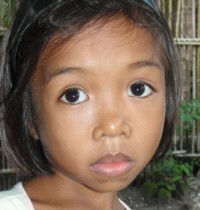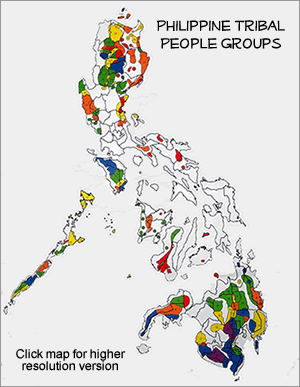The name "Tagbanwa" literally means "people from our place". "Banwa" means country or place. The Tagbanwas share a remarkably similar social and cultural heritage with the coastal peoples.
Although some older men still prefer to wear G-strings for comfort, most of the Tagbanwas are dressed like the non-tribe lowlanders. Many are able to speak and understand Tagalog and other dialects spoken in Palawan. The people's major sources of livelihood are agriculture and marine resources.
The basic social unit of the Tagbanwas is their nuclear family. The family practices monogamy. They live in compact villages of 45 to 500 individuals with houses made from bamboo, wood, and anahaw leaves to serve as roof.
Marriage is important among the Tagbanwas. An unmarried individual is considered odd among them. Polygamy, though allowed among the Tagbanwas, is rarely practiced. Divorce is generally practiced, but is discouraged by the elders if the couple has children.
The Tagbanwas are highly artistic in their sculpture. They use wood as medium for their artistry. They are also considered one of the earliest civilized groups in pre-historic Philippines. The Tagbanwas are one of the tribes in the Philippines which used ancient handwriting originating from South India. Actually, some of the older Tagbanwas still adhere to the ancient form of syllabic writing which was known then as "Surat". Some concerned groups are trying to preserve such legacies of the Tagbanwas.
Just like most of the minority groups in the country, the Tagbanwas have little to say in political decisions that affect their lives. This perhaps is mainly because of the illiteracy which is high among the minority groups and their geographic isolation from modern communities.
The Tagbanwas cultivate rice in kaingin fields, which is inter-cropped with sweet potato, corn and cassava. Those in the coastal areas are into fishing and exchange their catch with agricultural products for consumption. They also gather forest products such as gum, rattan and honey. They are able to get high income from their handicrafts, particularly woodcarving, mat-making and basketry.
The Tagbanwas believe in a supreme being called "Magindusa" who is the creator of heavens and the earth. Together with his wife and other minor gods, he lives in "Awan-awan". The Tagbanwa's concept of the universe is that the skyworld is described as an infinitely high canopy supported by two giant blood-red trees. Within the skyworld are the seven heavens. The underworld or "basad" is a mirror of Tagbanwa land, but with everything inverted. Magindusa, sits on a swing in the glow of the sunset.
The Tagbanwa's religious leader also functions as a healer of the community and is called "babaylan". He exerts considerable influence upon the daily life of the people. His main function is to guide a person's relationship with the dead who are his soul-relatives. He also mediates with the great hierarchy of "diwata" and with the spirits who roam and inhabit the nearby environment.
The Tagbanwas need more churches which will minister to their spiritual needs. They also need strong spiritual leaders among the native believers.
The Tagbanwas need effective literacy and community development projects that will help them increase their economy and enhance their awareness of and participation in local and national development.
Pray for missionaries to be physically strong and spiritually firm as they serve the Lord among the Tagbanwas. They also need wisdom in studying the Tagbanwa language, customs and lifestyle, so that they may be able to break through their culture and let the people understand God's salvation plan for mankind.
Scripture Prayers for the Tagbanwa, Aborlan in Philippines.
| Profile Source: Asia Missions (AMNET) |











